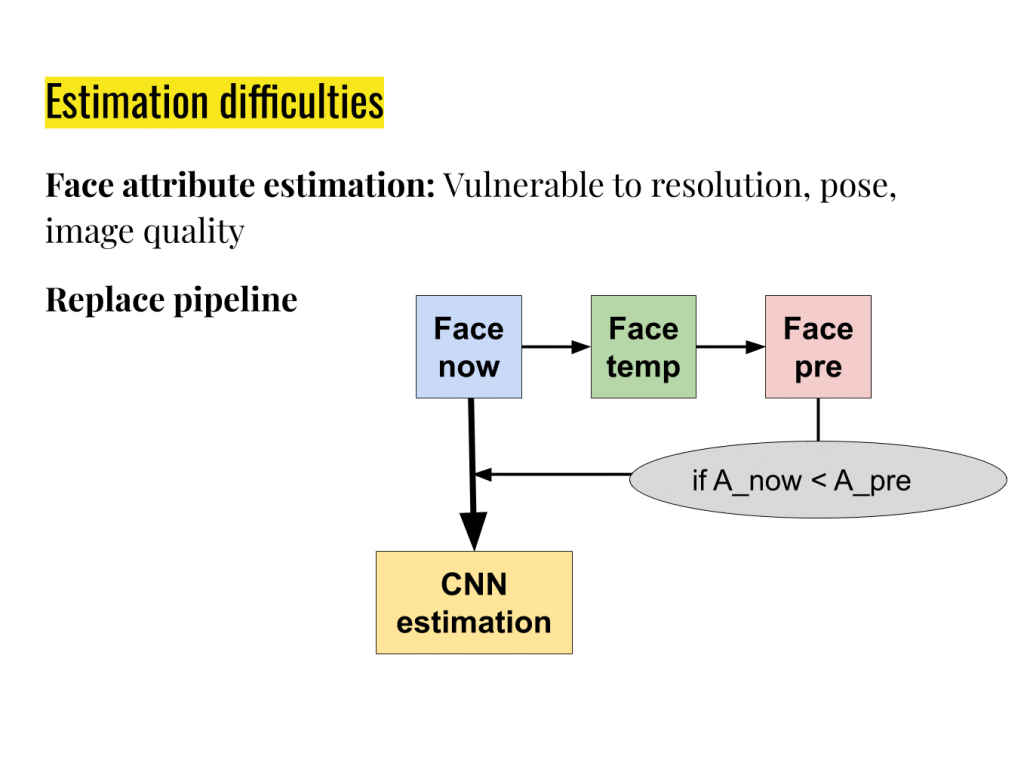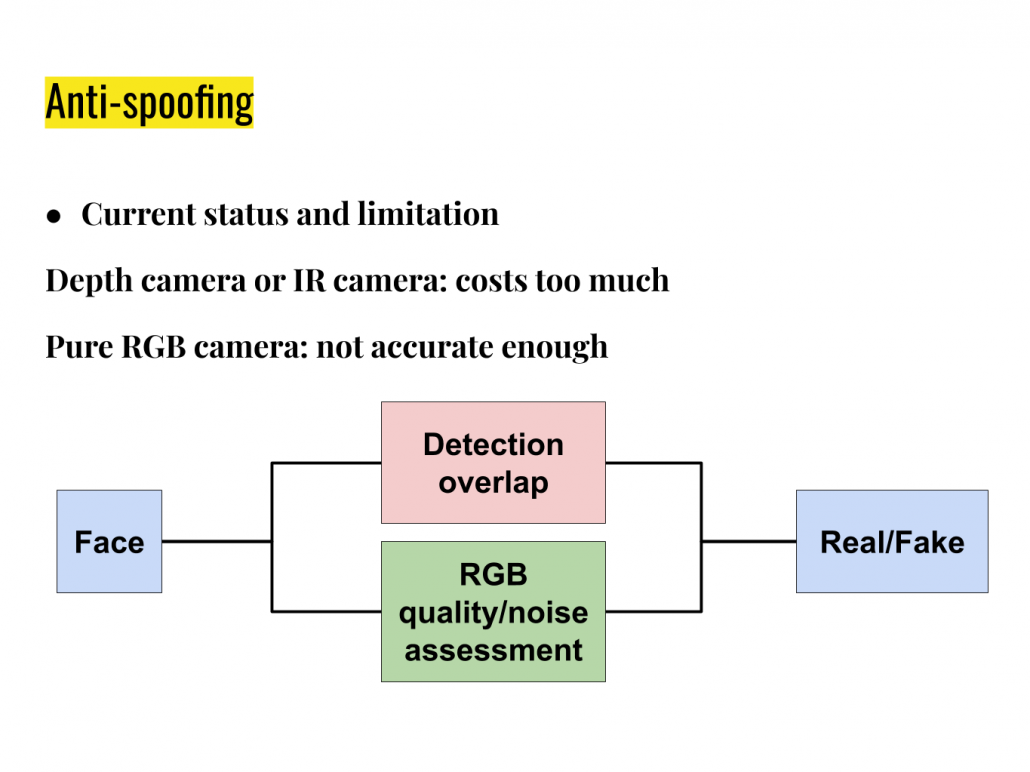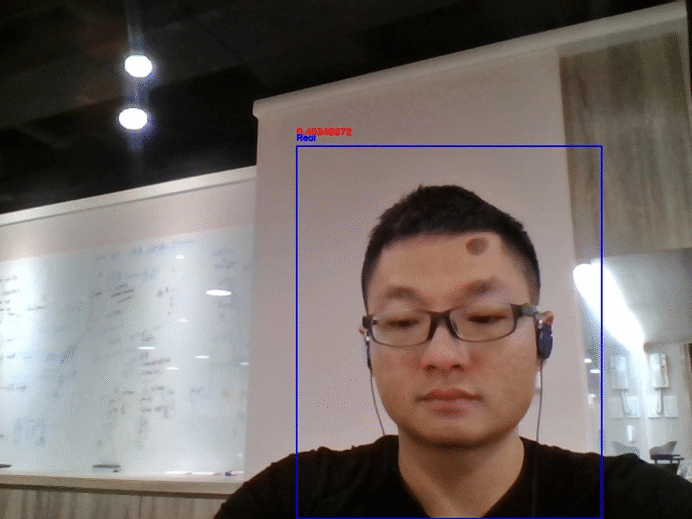Telling Something from Your Face: Age, Beauty, and Anti-Spoofing
 Figure 1. Demonstration of the facial age, beauty, pose estimation.
Figure 1. Demonstration of the facial age, beauty, pose estimation.
In the last few decades, facial analysis has been thoroughly explored due to its huge commercial potential. For example, learning the semantic meaning of a human face can help us to target potential customers more easily and more efficient. While face recognition is a well-established technology for surveillance systems or security control, it is also crucial for us to know the captured image is from a real person or a spoofing device. In this blog post, we are going to discuss what we do in Taiwan Ailabs and our demo system.
Predicting a human age or beauty from the appearance is a very subjective task. A man/woman can look younger than his/her real age while beauty is not even a quantifiable value. Nevertheless, knowing the approximated appearance age and beauty is still helpful for merchandise recommendation. For instance, recommending an old man/woman some soft drinks may not be a good idea, nor placing a massage chair in a children’s play zone.
There are several ways to estimate these two values with proper supervision. Classification tells us that we can use independent bins to represent a range of the age or beauty score. The drawback of such method is the range is manually set and might lead to quantization error. On the other hand, it is also natural to use regression to predict continuous values, but it might also lead to overfitting without constraints. In addition, the face pose and resolution also have a huge impact on the prediction performance. The above challenges make the prediction of age and beauty even more difficult.
Method:
Age and Beauty estimation
To resolve the above challenges while achieving very low cost, the demo system is built upon the recently published FSA-Net [1] in CVPR2019. It adopts Soft-Stagewise Regression (SSR) scheme [2] for eliminating the quantization error while maintaining low memory overhead.
For the training, we choose 128x128x3 as the cropped face resolution, and put an auxiliary loss as the quantized supervision prediction.
A drawback of such scheme is that unstable prediction might appears with different input images. We use a sequential frame selecting pipeline to stabilized the final prediction.

Figure 2. Sequential frame selecting pipeline.
Finally, only when the detected face has enough resolution with very small pose angle, it will be considered as a valid face and proceed with the estimation pipeline. The replacement policy can be altered as long as the selected face image is high quality with enough resolution.
Face anti-spoofing
In order to achieve anti-spoofing with a pure RGB image, we divide the process into two different tasks, cell phone detection and denoising based anti-spoofing estimation.

Figure 3. Face anti-spoofing pipeline.
We adopt the famous YOLOv3 [3] as the detector for the cell phone, laptop, monitor detection. Task 1 is defined as detection inside the phone area will be considered as a fake spoof. While taks 2 takes the quality and the noise of the image for determining whether it’s Real or Fake.
Demo images:
The following demo shows that our system can predict age and beauty with decent
 Figure 4. Demo images for age and beauty estimation.
Figure 4. Demo images for age and beauty estimation.

Figure 5. Demo image for face anti-spoofing. (Red: Fake. Blue: Real.)
Summary:
Face attributes estimation such as age and beauty is subjectively determined by the label data, but it is still useful for commercial analysis and recommendation. For face recognition, the anti-spoofing is also very important for the security and the robustness of the whole identity verification pipeline. We achieved these prototypes for showing that there is much more potential on these topics and the AI can truly help people to make a better decision with these estimations.
Reference:
[1] Yang, Tsun-Yi, et al. “FSA-Net: Learning Fine-Grained Structure Aggregation for Head Pose Estimation from a Single Image.” Proceedings of the IEEE Conference on Computer Vision and Pattern Recognition. 2019.
[2] Yang, Tsun-Yi, et al. “SSR-Net: A Compact Soft Stagewise Regression Network for Age Estimation.” IJCAI. Vol. 5. No. 6. 2018.
[3] Redmon, Joseph, and Ali Farhadi. “Yolov3: An incremental improvement.” arXiv preprint arXiv:1804.02767 (2018).


